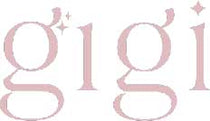Top tips for feeding babies and toddlers
Australian Parenting Expert Jo Ryan recently shared her top baby and toddler feeding tips with us. Read on to get the low-down...
When to introduce a feeding schedule
Strict routines for young babies can put a lot of pressure on mum and baby in the early stages. Young babies need to set the pace as to when they need to feed. Because they have tiny tummies, they may need to be fed as frequently as every two hours in those first few weeks.
It’s also important when establishing milk supply, for those mums who breastfeed, to feed baby when they are hungry, as this will set up a supply that will suit your baby’s needs.
That said, you can definitely have a bit of a feeding pattern to your day, which will usually be based around how long baby can be awake for, and for very young babies, they can really only cope with being awake for about 45 to 60 minutes at a time.
It is a great idea to let your baby find their own rhythm. Keeping a record of when your baby eats, sleeps and wakes can help you notice patterns emerge. Take some time to just observe your baby, as they are always trying to communicate with you. Just by noticing them, you can have a better understanding of what is working for your baby and what might not be. Then you can really start to understand their patterns and this will help you start to establish the best routine for them.
Having bub wrapped up in a soft, stretchy baby swaddle during feeding can help them feel secure and settled, and using a bib that's easy to remove without waking them when they fall asleep during feeding can also help make the transition to bed easier.
Transition to solids
Starting your baby on solids can be an exciting time. It can also be a bit stressful because there is so much information out there about when and how you introduce solid food into your baby’s diet!
The World Health Organisation (WHO) recommends that that babies should be exclusively milk fed up to six months and then they should introduce complimentary foods, meaning solid food, from 6 months. But this is obviously dependent on the baby and some babies may be ready before that.
Some babies will be hungrier than others and so it is important to watch your baby as they will let you know when they are ready. That said, you shouldn’t offer solid food to a baby under four months of age.
Some signs that your baby is ready for solids include:
- They can sit up well without needing support.
- They have lost the tongue-thrust reflex (automatically pushing solids out of mouth with tongue).
- They have developed the fine motor skills to self feed.
- They are willing to chew, even if they have few or no teeth.
- They show an interest in your food, and may try to grab food from your plate and put it in their mouth.
When you have decided to start solids, it can be hard to know what to offer. A lot of people start with the traditional purees, but in the last few years there is also the Baby Led Weaning (BLW) philosophy which has changed the way we look at feeding your baby.
If you're using a silicone feeder or beginner spoon to start on purees, it's handy to attach them to bub's bib with an accessory tether so they don't drop them and you're not having to constantly pick them up off the floor and wash them.
What to feed your baby when they're starting solids
Your baby will generally let you know when they are ready to have some solid food. Showing an interest in your food and an increased appetite are signs that a baby is ready. An increase in appetite can be shown by a baby waking more frequently at night, wanting to be fed, where they previously hadn’t.
Some great first finger foods you can try with your baby are:
- Lightly cooked then mashed apples and pears
- Blended or mashed avocado
- Mashed or blended banana
- Steamed and blended vegetables: potato, carrot and pumpkin are easy to mash and easy to digest.
- Rice cereal
Start with one food only and offer that for a couple of days. If after that it is going down with a minimum of fuss, increase an extra teaspoon of food every day until they are having up to 1 or 2 tablespoons at a time. Also start to introduce new foods every few days but try not to overload your baby’s system with too many new foods at once.
From around six months, you can also start to offer a selection of finger foods that are easy to pick-up, like steamed broccoli trees, and foods that are easy to chew on with gums, like steamed zucchini or steamed carrot wheels.
When babies first start on finger foods, they like to play with the food meaning they might not get as much food into them as when you would be feeding them with a spoon. This is okay because they will still be having their milk feeds. Some parents like to supplement the finger foods with some purees and that is okay too.
It’s not recommended to reduce milk feeds until baby is on three decent meals per day — at around 6 to 9 months. It doesn’t really matter if you give food or milk first but leaving a bit of time between food and milk — at least 45 minutes — can help to ensure your baby has enough room to enjoy their food.
'Baby-led weaning’: is it right for your baby?
Baby-led weaning (BLW) is a philosophy around introducing solids to your baby. The idea is that you let your baby feed themselves from the very beginning of introducing solids. It can mean that you skip the purees and just let your baby feed themselves.
It’s a good idea to start with one food only and offer that for a couple of days. If after that it is going down with a minimum of fuss, increase an extra food every day until they are having a decent amount of food.
Try not to overload your baby’s system with too many new foods at once. Baby’s digestive systems need to develop enzymes to breakdown the food, so if you overload their system the food becomes difficult to breakdown and they might get constipated.
Some advantages of BLW are:
- It can be much more convenient for parents, but it's messier!
- It can be easier — purees are time consuming.
- It gives babies the benefits of exploring food themselves, having a bit of control over what they eat. This can mean that they will be able to cope with many different textures and flavours, that pureed diets don’t provide.
- It’s also a great way for babies to learn to chew, and even though your baby may not have many, if any, teeth, those gums are very strong and they are able to munch on loads of foods.
However, BLW can be a little bit scary, especially for new parents because of the perceived risk of choking.
It is worth knowing that babies have a very strong gag reflex that is designed to stop babies from chocking. Research showed that babies who used the BLW method lost the gag reflex earlier as they were eating chunkier food much earlier than babies who were started on purees. Baby should also be able to sit upright which can help, and the food you give them should be soft and not too small that it might be inhaled.
Because BLW can be messy, it’s a good idea to invest in a silicone feeding bib with a large food-catcher or a great quality broad-coverage smock so they can just go for it!
For more helpful parenting advice, visit the BabyBliss website.








